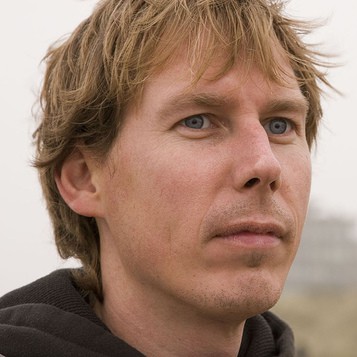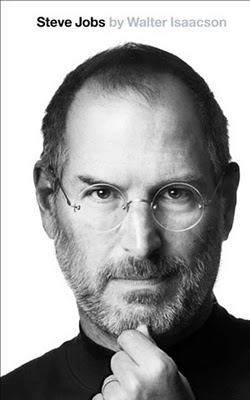Personal
There are 90 posts filed in Personal (this is page 1 of 12).
De kinderopvangketen; over het verbinden van beleid, uitvoering en ICT
 De afgelopen anderhalf jaar was ik namens ICTU projectmanager van de ontwikkeling van het Landelijk Register en de Gemeenschappelijke InspectieRuimte Kinderopvang en Peuterspeelzalen (LR GIR KOP).
De afgelopen anderhalf jaar was ik namens ICTU projectmanager van de ontwikkeling van het Landelijk Register en de Gemeenschappelijke InspectieRuimte Kinderopvang en Peuterspeelzalen (LR GIR KOP).
In de tweede helft van 2012 is LR GIR KOP overgedragen van programma naar een beheerfase en dat was een mooi moment om de lessons learned van het programma uit te werken. Dat resulteerde in een, mag ik wel zeggen, zeer fraai boekje waar vanuit verschillende invalshoeken geschreven is over de ontwikkeling, de implementatie en het beheer van LR GIR KOP. De hoofdstukken werden geschreven door DUO (beheer), KING (implementatie bij gemeenten en GGD’en), VNG en GGD (sturing vanuit hun respectievelijke landelijke organisaties), SZW (opdrachtgever en programmamanagement) èn door mij (vanuit ICTU over de ontwikkeling).
Het boekje werd als PBLQatie (vroeger HEC Papernote) gepubliceerd en is daarom te downloaden vanaf de site van PBLQ:
http://www.pblq.nl/publicaties/2013/papernote-40-de-kinderopvangketen
My personal organizing system
As announced, here’s an overview of my personal organizing system. Everybody has one of those actually, whether they’re aware of it or not. A well shaped personal organizing system can make a lot of things easier in your life, including getting stuff done, finding stuff back and prioritizing between what really needs to be done right the f*** now or what can be done later.
GTD
My personal organizing system is mostly based on Getting Things Done, the renowned system by David Allen (I’ve posted about it a few times: 1, 2, 3). The biggest thing about GTD is: get stuff that needs to be done out of your head and into a system you trust, so you can forget about and clear your head until the moment is right to follow up on it.
Next actions
Key to my organizing system is my actions notebook. All my actions are in one Moleskine(-like) notebook. I start every action with an asterisk and always write the date of origin next to it (to see how long it took to check off). I try to formulate every action as easy as possible: “call garage at 555-55555 to make appointment” vs. “have car fixed”. That’s what GTD calls the “next action”: the closest, easiest and most efficient thing you can do to get closer to your goal. When other people agreed to do something for me, I mark those actions with a hashtag. Within the notebook, there’s no sorting of actions. GTD recommends sorting actions specific to people, places (actions at home, at hardware store) or instruments required (actions at computer or a telephone). I used that for some time, but it didn’t really help me out. I love paper vs. digital because I can easily scribble it down and strike through them once they’re finished. In that way every couple of months I’ve filled a complete notebook with actions done, which gives a great feeling of accomplishment. When I’m 65, a whole closet might be filled with everything I’ve done over the years 😉 Of course I spent days and days on all kinds of cool task apps, on the Mac, on the iPhone, on the web, but… I never got them to work or couldn’t access them at the right moment. Also, again, I love striking through any action I’ve finished!
Every once in a while I clean up old actions and move them forward in the notebook if they’re not done yet. That way, my actions won’t be spread over the complete notebook but compressed into a limited amount of pages. Also, it’s a good reminder that the actions still need to be done and they’re probably becoming more urgent… When I finish a whole page with actions, there will be a big and bold cross over it (great feeling…).
One thing that became very clear to me the last year: if it’s not in my actions notebook, I will lose track of it. It can be very important or not, but it will only be done once it’s in my actions notebook. I even warn colleagues, if they don’t see me writing stuff down in my actions notebook, they can be sure it will never get done..
I use another notebook for… taking notes. But: notes are not actions. Generally I will never read the notes I made again, except if I need to look up some decision made or a quote from someone.
Inbox
In GTD your Inbox is everything that might result in a next action. A slip of paper, a magazine you come across, a voicemail. A lot of my actions go directly in my actions notebook. Sometimes I use the reminders app on my iPhone to quickly jot something down and will process it later on to my actions notebook. My e-mail inbox makes for a lot of actions. Important things I will process to my action list every day and every few weeks I will empty my complete inbox and see what I forgot. This is also a good way to send people reminders about what they were supposed to do.
Projects
A project is everything that cannot be accomplished with one or a few tasks. Renovating the house, buying and implementing new software at the office, setting up a marketing program all require lots of decisions and actions. A good overview of projects elevates you from the reality of everyday to a level you can oversee what you’re trying to reach for on a less short term. Every project should have an outcome. This is an area for improvement: I don’t have a list of projects written down and it’s definitely not something I go over each week. That means I have to pull myself out of the daily goings-on every now and then to think about what I’m trying to achieve..
E-mail
I try to come to zero e-mails every few weeks. This is definitely an area for improvement. Although I’m quite satisfied I almost never go above a hundred e-mails in my inbox, I’d love to go to zero e-mails every day. I’ve noticed that it’s no use to mark e-mails for follow-up or put actionable e-mails in a separate folder; I will just forget all about them. I should be more disciplined in: delete, archive, take action immediately, delegate or plan a follow up. BTW: I have a separate e-mail account for work and for private matters, both in Gmail.
Decisions made-archive
Here’s something I can’t get accustomed to. In every project a lot of decisions are made and most of the time there are even good reasons for the decisions. From a project management point of view, it would be great to have a current overview of all decisions made in the project and reasons given. Every now and then I’ll start something like a project diary, but I never get around to using it in a disciplined way..
43 folders
GTD suggests putting together a system of 43 folders: 31 days and 12 months to remind you of stuff that’s specific for a given day or month. I never got around to using it, but I do trust my actions notebook that I review every couple of days to remind me at the right moment.
Someday/maybe
In GTD there’s a someday/maybe list, for things you might want to do some time, but don’t want to plan yet. I use a list ilke that for things I want to learn, places I want to visit and stuff I might want to buy. Every couple of months I browse through it, sometimes learn to my surprise I’ve accomplished something on the list and dream about it a little.
Stuff to read
During workdays there will be a lot of stuff to read. I either scan through it directly from my e-mail box or print it out and read it while commuting. Frankly, there’s a lot of stuff I just don’t read at all and most of the time nobody will ever remind me to read it…
Calendar
I use my calendar only for appointments and birthday reminders. GTD suggests you can use it for stuff that needs to be done on a specific day, but I don’t use that. My calendar is linked from my work Exchange account to my iPhone so I can access it virtually everywhere.
Archives
My paper archive is more or less based on GTD as well. There’s a row of easily accessible ring bands I put my paperwork in. I use dropbox for current work and personal folders I need and archive them on my laptop and external hard drive if I don’t use them that often. I bring my Macbook everywhere so I pretty much always have access to my digital files. I scan some of the paperwork that really matters, like insurance and mortgage contracts.
KPI’s
Next to GTD, there’s a list of kpi’s I update at lease monthly. The list includes sports, drinking enough water, spending time in nature, spending time with friends and so on. for each item I will define criteria for green orange and red. For example: spending time in nature should be at least every two weeks (green). If it falls back to once a month it’ll be orange, less than once a month is red.
Day planning
I’ve never used much of a day planning or week planning for that matter. My line of work generally requires a lot of improvising and otherwise my days are filled with scheduled appointments. Preparation of meetings, attending meetings and debriefing meeting makes for a pretty good day planning by itself. However, I try to formulate three goals per day that makes my day a great one. For example: 1. finish report about x, 2. call so and so, 3. work out at gym.
So there it is: my personal organizing system. I’d be really interested in yours!
Maite says: Hello World
Walter Isaacson: Steve Jobs
Tsja, wat moet je over de biografie van Steve Jobs zeggen. Seth Godin verwoordde wel mooi wat ik ervan overhield: “No one reports liking Steve Jobs very much, yet he was as embraced as any businessperson since Walt Disney. Because he cared. He cared deeply about what he was making and how it would be used. Of course, he didn’t just care in a general, amorphous, whiny way, he cared and then actually delivered.”
Die enorme passie die Jobs tentoonstelde, daar werd ik een paar keer stevig door geraakt in het boek. De “Think different”-campagne, het moment dat het ontwerp van de iPhone helemaal omgegooid werd omdat ze het toch niet goed genoeg vonden, de voorbereidingen voor productintroducties. Het is zulk onorthodox leiderschap, al helemaal voor een beursgenoteerde omgeving. Alleen de kwaliteit van het product doet er toe, los van financiële aspecten.. Ik kijk er naar uit om Inside Apple te gaan lezen, dat veel meer in gaat op de cultuur van het bedrijf..
http://www.amazon.com/Steve-Jobs-Walter-Isaacson/dp/1451648537
Aletha Solter: De taal van huilen
 *Disclaimer* Dit is het enige boek over baby’s dat ik waarschijnlijk/hopelijk ooit ga recenseren.
*Disclaimer* Dit is het enige boek over baby’s dat ik waarschijnlijk/hopelijk ooit ga recenseren.
Alhoewel “What to expect when you’re expecting”, geleend van Nina, ook niet te versmaden babyliteratuur is, leverde “De taal van huilen” dusdanige aha-erlebnissen en eye-openers op (pardon voor het jargon), dat ik daar toch iets over moet schrijven.
“Waarom huilen babies?”, een vraag die menig jonge of oudere (wanhopige) ouder zich vast talloze malen heeft gesteld. Honger, pijn, krampjes, verveling, manipulatie, vermoeidheid of misschien wel allemaal tegelijk. En dus wiegen we, geven we spenen, troosten we, geven we nog eens “de borst” of “het flesje” of stellen we beloningen voor niet meer huilen in het vooruitzicht. En in de wat vijandiger richtingen van het spectrum negeren we, straffen we, schudden we zelfs door elkaar. En dat allemaal vanuit het idee “huilen is niet goed”. En in die aanname brengt dit boek nou net verandering..
“De taal van huilen” zegt dat babies en kinderen altijd huilen om een reden, hoe onbegrijpelijk of irritant dat ook voor ons kan zijn. En als die reden niet direct aanwijsbaar is, in de vorm van honger of pijn, moeten we dat huilen ook gewoon laten gebeuren. Kinderen hebben het nodig om te kunnen huilen om te verwerken wat ze hebben meegemaakt. Ouders moeten daarop reageren door het kind vast te houden en aandacht te geven. Als je dat goed doet, dan kan het kind snel zijn spanning ontladen en nare ervaringen verwerken, waardoor het ontspannen en vrolijk opgroeit.
In zo’n 160 pagina’s wordt natuurlijk meer toegelicht, ook over het tekeer gaan en de driftbuien van kinderen, maar de boodschap is telkens hetzelfde: ook het tekeer gaan heeft een reden en is niet per sé met straffen of negeren op te lossen. Kenmerkend is het “gebroken koekjes syndroom” waarbij kinderen volledig overstuur zijn “omdat hun koekje is gebroken”. Kinderen zoeken echter vaak een aanleiding om te gaan huilen of boos te worden, zodat ze hun spanning kwijt kunnen. Misschien is er eerder op de dag wel iets ergs gebeurd en zit het kind daar nog mee.
Ik kon hem één op één doorvertalen naar gedrag van volwassenen. Een partner die boos of verdrietig wordt om iets wat op het eerste gezicht totaal niet belangrijk is, anyone?
http://www.bol.com/nl/p/nederlandse-boeken/taal-van-huilen/666839329/index.html
Eight versatile office bags
As Matthew Grandin says: “the task of carrying stuff is as fundamental as gravity”. Some time ago, I became really interested in everything that has to do with carry. While commuting, climbing, walking, cycling and going on holidays in general I was always looking for the lightest stuff to bring, the best way to pack and the best bag for the given situation.
Enter Carryology, a blog I’ve been following for a while now and whose contributors are close to gurus in the art of carry, writing about anything from wallets to bags to the best buckles. I decided to jump on their train and ride along.
So… here’s my first post for Carryology: Eight versatile office bags!
Andalucia
The night before we left we wanted to sleep in a monastery. We drove down a bumpy road in pitch black darkness. There were no lights at all in the distance. After a few kilometres we came to a porch, still no lights. Then we saw headlights behind us. Next to us an old lady stopped, opened her window and said in perfect English: “Can I help you?” She turned out to be the owner, she let us in, gave us a wonderful room and cooked dinner for us. Only in the morning we could see what an amazing place we visited and what a magnificent view we had!





